- Home
- Неизвестный
Where The Hell is Boulevard? Page 9
Where The Hell is Boulevard? Read online
Page 9
“Kyra, the cause of death may need to be investigated further and I don’t think the hate crime charge will stick.”
“You know I’m going to argue that these nice boys simply got into a little mischief, maybe a minor mugging, but the state will never prove the intent required to make the hate crime charge stick.
Buck’s tongue was buried deeply in his cheek as he uttered those thoughts to Kyra.
She stared back at him, “Are you shitting me? Look Buck, in all candor, like I said initially, I don’t think I have any room to deal on this case in any way that would begin to interest you.”
“The DA is going to be under great pressure from the Latino community not to cut corners on this or sweep it under the rug when an innocent migrant worker was brutally killed even if he was undocumented."
“I’m boxed in and the only deal I can see is life and no death penalty.”
While saving this boy’s life would be of paramount importance, the alternative of a 17-year-old spending the rest of his life in prison was clearly not good news and would be a heartbreak to the grieving Mrs. McDermott.
Buck asked for more specifics as to how Tommy and Jack possibly claimed that it was all Eddie. Kyra provided some generalities as to what she believed the other two would testify to.
“Buck, short of proving your client was not there or merely watched the beating from the porch of Anderson’s Country Store, it doesn’t greatly affect the likelihood of conviction.”
“Frankly, sentencing options are somewhat secondary to our office at this time. I know you’d like to make a deal that guarantees where Eddie spends his future years and how long he’d be gone, but I just don’t see anything at this time.”
Kyra had learned early in her career that securing the conviction was the prime concern, and, she generally avoided dwelling on the wisdom of the penalty the legislature chose to impose. She was by no means insensitive to a crime like this, but first things first–the conviction!
“Kyra, I do appreciate your time and candor. It looks like the battle lines are drawn for now, but I’m sure it won’t be the last time we talk.”
“Always a pleasure, Buck. Call me anytime.”
Monday, October 15
FBI Office, San Diego, CA, 9:30 a.m.
As FBI agent Jack Thomas continued to build his case against José María Cardozo, he lamented that his smoking gun had gone away with the death of the man only known as Javier Molina.
Jack decided that since nothing else was happening on the Cardozo case, he would contact Buck Johnson, who the DA’s office informed him was one of the boys’ attorneys and the suspect that, off the record, the DA’s office believed to be the leader of the pack.
Jack had known of Buck over a number of years even though Buck did not do a significant amount of federal criminal defense. The two major crime subjects in the Southern district were drugs and white-collar crime. However, the latter was not really Buck’s forte and heavy duty drug dealer defense was not really something Buck had the stomach for–even though money from those cases could be pretty good.
When Jack phoned Buck and was put through to Buck’s office, he got the patented “Top o’ the morning to you, Jack.”
“To what do I owe the pleasure of hearing from my government?"
“I promise I paid my taxes.”
“Very funny. Actually I’m investigating a motorcycle gang which reportedly has one Buck Johnson as its point man.”
Buck cracked up.
Shifting to a more serious tone, Jack explained his call and shared candidly the story of his potentially star witness, Javier Molina, being mysteriously or conveniently killed on his way to meet with Jack and a U.S. attorney prosecuting the case against an alleged drug king pin named José María Cardozo. Cardozo was believed to be the jefe of one of the most notorious drug cartels in Mexico. Although Buck was not overly familiar with the Cardozo cartel, he had read periodic news reports about the pending prosecution.
While Jack as an FBI agent was clearly aligned with the prosecutor’s side in criminal matters, Buck decided he was comfortable under these circumstances sharing certain information. He was confident, on Jack’s word, that nothing would not get back to the DA’s office. While Jack sensed some nexus between his case and the death of Molina, he assured Buck that convicting one or all of the boys was of no interest to him.
Jack explained that he got the Reader’s Digest version of the crime scene and what they knew so far about the crime and the condition of the victim from the DA’s office. He then asked Buck, “What can you tell me?”
“My client describes a strange sense that someone else was there at the beating other than he and his buddies.”
“On top of that, the Medical Examiner and my pathologist don’t believe the beating should have caused the death of the victim.
“The icing on the cake is that we have developed some evidence that a sophisticated and exotic toxin that was likely the actual cause of death.”
Jack Thomas’s investigative senses went into hyper alert!
Jack stated boldly to Buck, “What if Molina was assassinated?”
“What do you mean?” Buck was not yet following completely.
“Our Cardozo prosecution.”
Jack went on, “Us old school FBI Agents were taught that discoving the ‘who,’ ‘how’ and ‘why’ are the keys to any murder investigation.”
“The ‘who’ is clearly suggested to be the Cardozo family based on what we know,” he added.
“The ‘why’ falls into place pretty easily based on what we know.”
“The ‘how’ may have just been provided by your pathology tech,” the FBI Agent concluded.
“Buck, I admit that we are still a long ways away from confirmation and first need to find a way to connect the dots as to how the young boys possibly fit in. I truly appreciate this information and certainly owe you one. I can certainly see mutual benefit in pursuing this further.”
Finishing his thought, Jack added, “I’ll get my people on this right away and attempt to trace in detail Molina’s travels from Calexico to San Diego with his fatal stop in Boulevard.”
Buck emphasized, “Jack, I’m really against the wall time wise. Eddie’s trial begins in about four weeks.”
“I’ll do what I can. I assure you I will keep in touch.”
Tuesday, October 16
Calexico, CA, 8:30 a.m.
A cell phone rang in the pocket of one Dennis Alondo, an undercover FBI special agent assigned to an elite Federal Border Task Force of the FBI. As far as Jack Thomas was concerned, Dennis’s track record was nothing short of extraordinary. His intuitiveness and mystery solving ability caused his fellow agents to sometimes refer to him as “The Mentalist.” As the television character he was likened to, he did seem to observe much more than the average agent.
Jack brought Dennis up to speed on the evolution of the deceased Cardozo witness saga. He went on to tell Alondo that the whole “accidental” bad luck of the killing of Molina looked not so accidental after all.
“I need your help in tracking down any lead you can get as to Molina’s activities from the time I talked to him until he was killed in Boulevard.
“I am going to immediately get you a photo of the dead man. I asked the coroner’s office to photograph Molina’s face at the morgue and send it to me. I will have the lab touch it up to try to reflect what he would look like before the beating. I’m pretty sure our computer experts can create a photo of Molina as though he were alive and healthy.”
Alondo laughed, “So,we’re better than Photoshop.”
“All kidding aside, I’m on it. I’ll be in touch.”
Within 24 hours, one of Alondo’s men had a hit. It appeared that one of the places all of the agents who worked Calexico would start with was a certain well known brothel in town. The madam of the house recognized the face on the photo she was shown as an occasional customer and directed the agent to the young señorita that the man in the
photo visited when he came through.
As it turned out this was the young woman Molina had spent the night with before his fateful demise. Furthermore, she had escorted Molina out of the house as he was leaving on the morning of his eventual death. She remembered him particularly professing his love for her and that soon he would be able to “take her away from all this” and provide a better life in Los Estados Unidos. She said she had politely pretended to be enamored as he was a good tipper, but she had heard that same story many times before.
On further questioning as to whether she had seen anything else when Molina left, she said that she had remained outside to have a cigarette and she did recall seeing a dark SUV parked near the house on the otherwise empty streets and that the SUV left within a minute or so after Molina had headed to the truck stop area. She paid no further real attention since a dark SUV was not an unusual sight in Calexico.
Alondo and his crew’s next job was to try to identify that dark SUV and its occupants. They hit the streets with an ear to the ground. Alondo was familiar with assassinations ordered from Mexico and carried out in border towns of the United States. The “M.O.” of these crimes was surprisingly the same. Hit teams that operated on the U.S. side of the border were hired by the people on the Mexican side of the border contracting for completion of an assassination.
The total number of these different teams, or contractors as they were known on the U.S. side, were relatively few. They used their special skills to make sure that their competition was limited. One of Dennis’ special agents soon got a lead on two men who had returned on the day in question to a small establishment known as Marta's Cantina and were celebrating some event or accomplishment.
A visit to Marta’s along with a crisp $50 bill to one of the regulars got the agent exactly what he wanted. Not only did he get the names of a likely pair of suspect assassins, but locations where they usually were found. All of this was now reported back to Jack Thomas in San Diego.
Alondo awaited instructions about what to do next as Jack Thomas and Sally Ferguson contemplated their approach. Would an outright confrontation of the assassins, an old-fashioned shakedown, get them an admission of the kill? Jack and Sally knew they didn’t have much to offer the assassins as protection. If the Cardozos found out that the very contract assassins they hired had ratted out the family, one of the competitors in the business would simply and quickly get a new contract from the Cardozo family to eliminate the original hit team. This was the circle of life in their business.
Wednesday, October 17
FBI Office, San Diego, CA, 10 a.m.
Jack said to Sally, “You know that without the live testimony at trial that the Cardozo family ordered the hit, we’re up shit creek. We have to have these characters in the courtroom to secure the conviction of our prisoner.”
Only in America does this free enterprise system work so well. As word quickly spread around Calexico about what was boiling under the surface, one of the actual assassin’s “competitors” came forward to one of Alondo’s men saying he had all that was needed to connect Cardozo to the ordered hit. This young man was industrious and tech-savvy enough to have pictures and recordings that would seal the deal. The young man had also recently decided that he wanted to end his life of crime and migrate to the U.S. to start a new life with his girlfriend and their baby who was on the way.
Jack Thomas and Sally Ferguson were in business again. Now the trick was to get this young man and his girlfriend to San Diego to see how good a case they could build on the assassination of Javier Molina.
This time, Jack was not about to leave anything to chance and made sure Dennis Alondo provided a personal escort for the young man and his pregnant girlfriend.
Alondo was directed by Jack, “Immediately get this witness and his girlfriend to San Diego and don’t skimp on the escort protection you need.”
Monday, November 7
Department 6 of the Superior Court, 9 a.m.
Preliminary matters and motions having been completed the prior Friday, the actual trial of the People vs. Eddie McDermott was about to begin in earnest. The DA’s office had decided to have Kyra remain in the first chair role at trial, but another deputy, actually senior to Kyra, by the name of Sam Martin was co-chairing the trial.
As Buck entered the courtroom, he immediately spotted his old friend, Judge Goodman’s Court Reporter, Lisa Alexander.
Lisa was a veteran reporter and had plied her trade for some 30 years. She was a private deposition reporter for some 25 years and then decided to add structure to her typical workday/week and take a position in court.
Having known Judge Goodman for many years, she shared her thinking with the Judge one day over lunch. It just happened that Judge Goodman needed an in-court reporter and knew well that Lisa was considered the best in her profession. Thus, a friendship yielded a mutual benefit and Lisa went to work in Goodman’s courtroom.
The more senior lawyers in town knew Lisa from her private deposition reporting days as well as from Judge Goodman’s court. The younger lawyers simply knew her from the court and always enjoyed her great
smile and pleasant disposition.
The young lawyers were indoctrinated by their mentors that the court reporter provided one of the most useful aids in the examination or cross-examination process.
They were told, “Make sure you periodically glance at the court reporter during any examination or argument to the Judge. If she looks comfortable and not rushed to take down your words, you are proceeding at a good pace with your witness or the court. On the other hand, ‘If you are losing the reporter, you are also losing the judge or jury.’ ”
However, in reality, Lisa Alexander was so fast and accurate, there was almost no pace of testimony she couldn’t keep up with.
Monday, November 7
Department 6 of the Superior Court, 9:15 a.m.
Kyra’s innate charm and persuasive communication skills made her a natural choice before the jury and not a compromise candidate for the job of lead counsel for this case. While Kyra highly regarded Buck Johnson, she was not intimidated by him. She was clearly up to the challenge.
The issue of cameras in the courtroom was quickly dealt with by Judge Goodman. She was not going to turn this serious and tragic matter into a media circus. Despite the plea from the local media of the significance of this hate crime to the minority community, she was not going to risk a verdict influenced by public opinion. Judge Goodman strictly admonished the print media representatives as to their guidelines while in and around the courtroom during the trial.
The courtroom was full to capacity. Some of the gallery included courtroom junkies–those who walked the hallways looking for a good trial–as well as those who had heard about the case in the media and wanted a closer look.
The selection of the jury would be more efficient than in many cases. The panel of potential jurors were required to complete a questionnaire the previous week which had been jointly prepared by Kyra and Buck. Through this process, they could eliminate clear bias of potential jurors and the “live” portion of voir dire, during which they were allowed to further question the potential jurors about their prejudices on certain subjects germane to this case, might go more quickly and smoothly.
By 11:30 a.m. the 12 person jury had been selected. Five men and seven women. Buck liked that ratio, thinking these women jurors would be more likely to be sympathetic since they all had children. Kyra liked the ratio as well, believing she would easily connect with the women and they would be appalled by the violence and demand punishment.
Whether jury selection is an art or a science will be debated for years by trial lawyers. As for Buck, he was more old school. To him, after all the questioning was done, gut instinct was still the most important thing in deciding who he accepted versus who he chose to exercise his challenges against. The challenge procedure allowed him to dismiss a potential juror whose answer to any voir dire question was particularly troubling.
If there was a clear bias shown, he could request the potential juror be dismissed “for cause.” If he merely had that uncomfortable feeling, he had a limited number of preemptory challenges he could exercise to remove a potential juror. The danger, of course, was not knowing what you were going to get as a replacement.
He couldn’t quite pick his perfect jury, but hopefully he could eliminate those who he felt were against his case from the start and not likely to change their view no matter the evidence demonstrated.

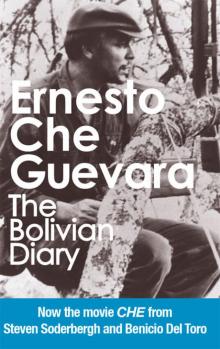 The Bolivian Diary
The Bolivian Diary Caffeine Blues_ Wake Up to the Hidden Dangers of America's #1 Drug ( PDFDrive )
Caffeine Blues_ Wake Up to the Hidden Dangers of America's #1 Drug ( PDFDrive )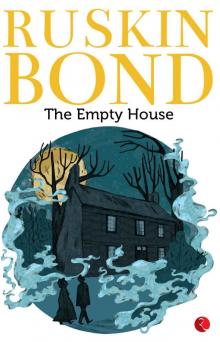 The Empty House
The Empty House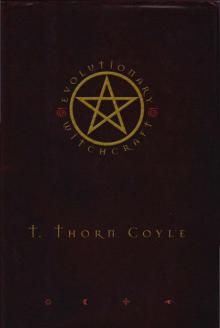 T Thorn Coyle Evolutionary Witchcraft (pdf)
T Thorn Coyle Evolutionary Witchcraft (pdf)![K J Emrick & Kathryn De Winter - [Moonlight Bay Psychic Mystery 01-06] - A Friend in; on the Rocks; Feature Presentation; Manor of; by Chocolate Cake; A-Maze-Ing Death (retail) (epub) Read online](http://freenovelread.comhttps://picture.efrem.net/img/nienyi/k_j_emrick_and_kathryn_de_winter_-_moonlight_bay_psychic_of_by_chocolate_cake_a-maze-ing_death_retail_epub_preview.jpg) K J Emrick & Kathryn De Winter - [Moonlight Bay Psychic Mystery 01-06] - A Friend in; on the Rocks; Feature Presentation; Manor of; by Chocolate Cake; A-Maze-Ing Death (retail) (epub)
K J Emrick & Kathryn De Winter - [Moonlight Bay Psychic Mystery 01-06] - A Friend in; on the Rocks; Feature Presentation; Manor of; by Chocolate Cake; A-Maze-Ing Death (retail) (epub)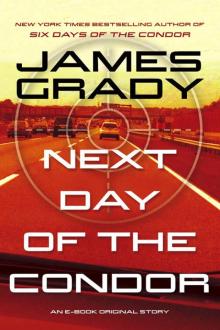 Next Day of the Condor
Next Day of the Condor Onyx
Onyx The Woodcock Game: An Italian Mystery Novel
The Woodcock Game: An Italian Mystery Novel Granta 122: Betrayal (Granta: The Magazine of New Writing)
Granta 122: Betrayal (Granta: The Magazine of New Writing)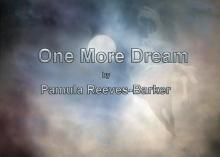 One More Dream
One More Dream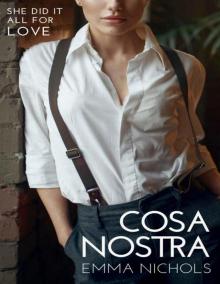 Cosa Nostra by Emma Nichols) 16656409 (z-lib.org) (1)-compressed
Cosa Nostra by Emma Nichols) 16656409 (z-lib.org) (1)-compressed Cowboy by J. M. Snyder
Cowboy by J. M. Snyder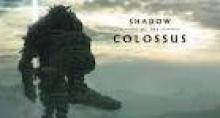 Colossus
Colossus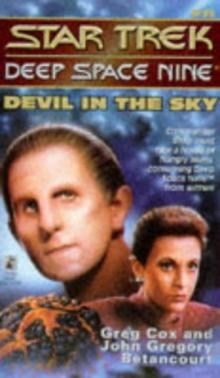 Star Trek - DS9 011 - Devil In The Sky
Star Trek - DS9 011 - Devil In The Sky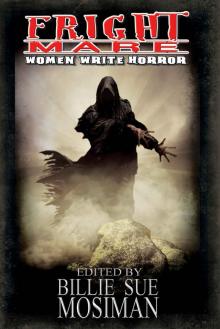 Fright Mare-Women Write Horror
Fright Mare-Women Write Horror The Future Is Japanese
The Future Is Japanese In the Witching Hour
In the Witching Hour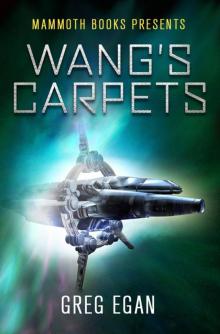 Mammoth Books presents Wang's Carpets
Mammoth Books presents Wang's Carpets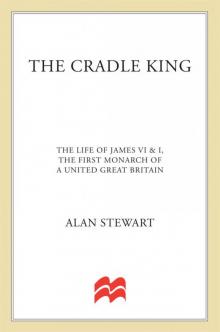 The Cradle King: The Life of James VI and I, the First Monarch of a United Great Britain
The Cradle King: The Life of James VI and I, the First Monarch of a United Great Britain Stalking Moon
Stalking Moon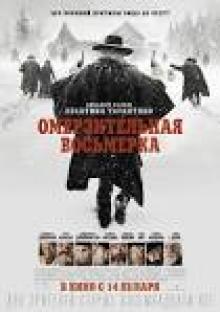 Hostage To The Devil
Hostage To The Devil![Harris, Daisy - Mere Passion [Ocean Shifters 2] (Siren Publishing Classic) Read online](http://i1.bookreadfree.com/i/03/23/harris_daisy_-_mere_passion_ocean_shifters_2_siren_publishing_classic_preview.jpg) Harris, Daisy - Mere Passion [Ocean Shifters 2] (Siren Publishing Classic)
Harris, Daisy - Mere Passion [Ocean Shifters 2] (Siren Publishing Classic) Day, Sunny - Hot in Space (Siren Publishing Ménage and More)
Day, Sunny - Hot in Space (Siren Publishing Ménage and More) Five Books Of The Lives, Heroic Deeds And Sayings Of Gargantua And His Son Pantagruel
Five Books Of The Lives, Heroic Deeds And Sayings Of Gargantua And His Son Pantagruel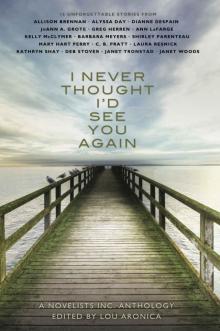 I Never Thought I'd See You Again: A Novelists Inc. Anthology
I Never Thought I'd See You Again: A Novelists Inc. Anthology Billion dollar baby bargain.txt
Billion dollar baby bargain.txt![Chenery, Marisa - Turquoise Eye of Horus [Egyptian Shifters 1] (Siren Publishing Classic) Read online](http://i1.bookreadfree.com/i1/03/26/chenery_marisa_-_turquoise_eye_of_horus_egyptian_shifters_1_siren_publishing_classic_preview.jpg) Chenery, Marisa - Turquoise Eye of Horus [Egyptian Shifters 1] (Siren Publishing Classic)
Chenery, Marisa - Turquoise Eye of Horus [Egyptian Shifters 1] (Siren Publishing Classic) Cat Magic
Cat Magic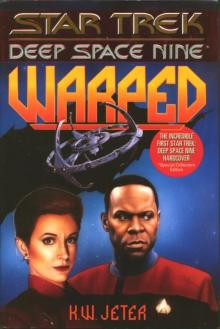 Star Trek - DS9 - Warped
Star Trek - DS9 - Warped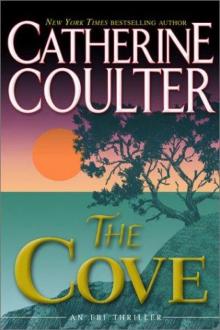 Catherine Coulter - FBI 1 The Cove
Catherine Coulter - FBI 1 The Cove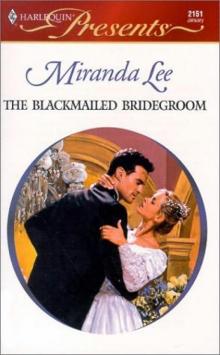 Miranda Lee -The Blackmailed Bridegroom
Miranda Lee -The Blackmailed Bridegroom The Seashell Anthology of Great Poetry
The Seashell Anthology of Great Poetry Dragon Moon
Dragon Moon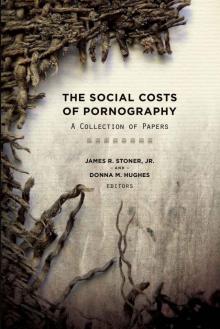 The Social Costs of Pornography: A Collection of Papers
The Social Costs of Pornography: A Collection of Papers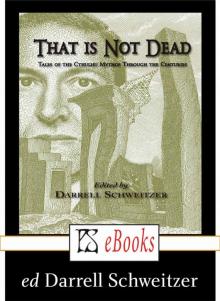 That Is Not Dead
That Is Not Dead Best New Horror: Volume 25 (Mammoth Book of Best New Horror)
Best New Horror: Volume 25 (Mammoth Book of Best New Horror) This Christmas by J. M. Snyder
This Christmas by J. M. Snyder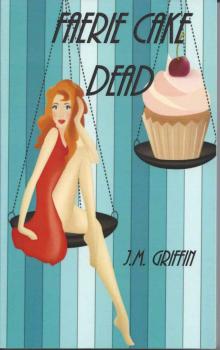 Faerie Cake Dead
Faerie Cake Dead CS-Dante's Twins
CS-Dante's Twins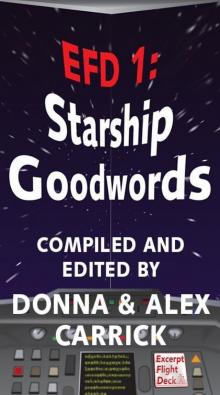 EFD1: Starship Goodwords (EFD Anthology Series from Carrick Publishing)
EFD1: Starship Goodwords (EFD Anthology Series from Carrick Publishing)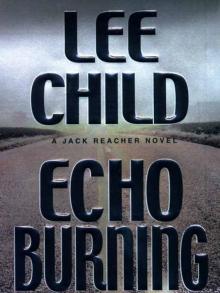 Echo Burning by Lee Child
Echo Burning by Lee Child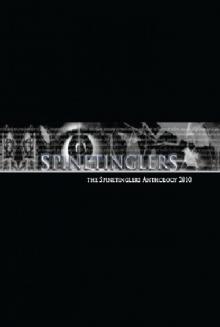 The Spinetinglers Anthology 2010
The Spinetinglers Anthology 2010 Wild Hearts
Wild Hearts Violet Winspear - Sinner ...
Violet Winspear - Sinner ... Broken Angels
Broken Angels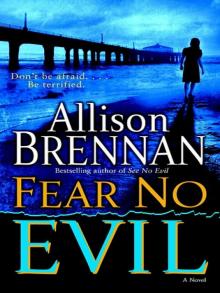 FearNoEvil
FearNoEvil![Santiago, Lara - Range War Bride [Tasty Treats 11] (Siren Publishing PolyAmour) Read online](http://i1.bookreadfree.com/i1/03/30/santiago_lara_-_range_war_bride_tasty_treats_11_siren_publishing_polyamour_preview.jpg) Santiago, Lara - Range War Bride [Tasty Treats 11] (Siren Publishing PolyAmour)
Santiago, Lara - Range War Bride [Tasty Treats 11] (Siren Publishing PolyAmour) 8 Great Hebrew Short Novels
8 Great Hebrew Short Novels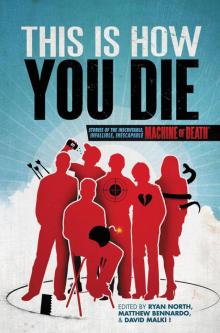 This Is How You Die: Stories of the Inscrutable, Infallible, Inescapable Machine of Death
This Is How You Die: Stories of the Inscrutable, Infallible, Inescapable Machine of Death The Steampowered Globe
The Steampowered Globe While We Wait by J. M. Snyder
While We Wait by J. M. Snyder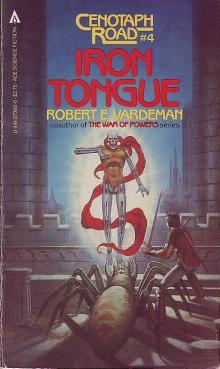 Iron Tongue cr-4
Iron Tongue cr-4![Stieg Larsson [Millennium 02] The Girl Who Played with Fire v5.0 (LIT) Read online](http://i1.bookreadfree.com/i1/03/31/stieg_larsson_millennium_02_the_girl_who_played_with_fire_v5_0_lit_preview.jpg) Stieg Larsson [Millennium 02] The Girl Who Played with Fire v5.0 (LIT)
Stieg Larsson [Millennium 02] The Girl Who Played with Fire v5.0 (LIT)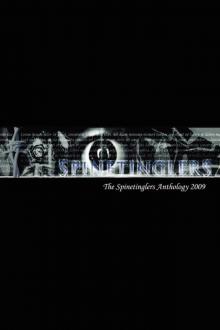 The Spinetinglers Anthology 2009
The Spinetinglers Anthology 2009 Bowles, Jan - Branded by the Texas Rancher (Siren Publishing Classic)
Bowles, Jan - Branded by the Texas Rancher (Siren Publishing Classic) Brown, Berengaria - Vivienne's Vacation (Siren Publishing Ménage and More)
Brown, Berengaria - Vivienne's Vacation (Siren Publishing Ménage and More) Inheritors
Inheritors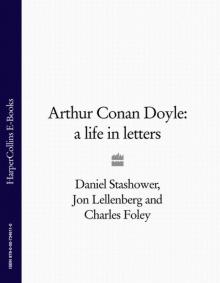 Arthur Conan Doyle: A Life in Letters
Arthur Conan Doyle: A Life in Letters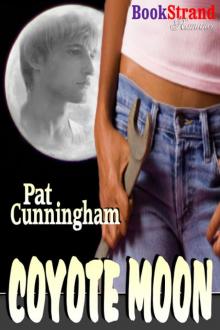 Cunningham, Pat - Coyote Moon (BookStrand Publishing Romance)
Cunningham, Pat - Coyote Moon (BookStrand Publishing Romance)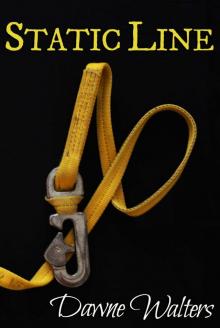 Static Line
Static Line Ghost Mysteries & Sassy Witches (Cozy Mystery Multi-Novel Anthology)
Ghost Mysteries & Sassy Witches (Cozy Mystery Multi-Novel Anthology) Elizabeth Neff Walker - Puppy Love
Elizabeth Neff Walker - Puppy Love Ghosts in the Machine
Ghosts in the Machine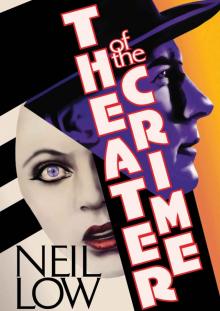 Theater of the Crime (Alan Stewart and Vera Deward Murder Mysteries Book 6)
Theater of the Crime (Alan Stewart and Vera Deward Murder Mysteries Book 6) Red Satin Lips, Book One (The Surrender Series)
Red Satin Lips, Book One (The Surrender Series)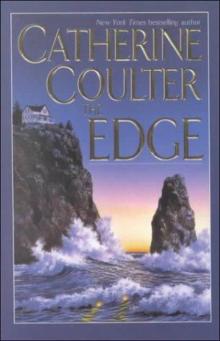 Catherine Coulter - FBI 4 The Edge
Catherine Coulter - FBI 4 The Edge StateoftheUnion
StateoftheUnion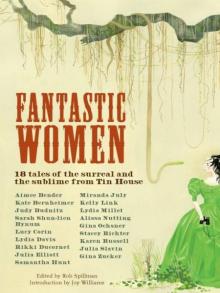 Fantastic Women: 18 Tales of the Surreal and the Sublime from Tin House
Fantastic Women: 18 Tales of the Surreal and the Sublime from Tin House Sara Wood-Expectant Mistress original
Sara Wood-Expectant Mistress original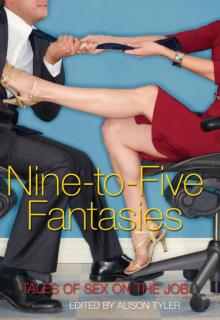 Nine-to-Five Fantasies: Tales of Sex on the Job
Nine-to-Five Fantasies: Tales of Sex on the Job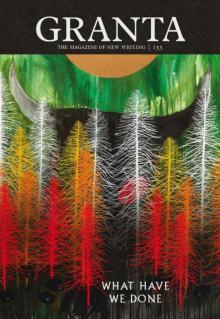 Granta 133
Granta 133 Dream Quest
Dream Quest The Warlock in Spite of Himself wisoh-2
The Warlock in Spite of Himself wisoh-2 Glenn, Stormy - Mating Heat (Siren Publishing Ménage Amour)
Glenn, Stormy - Mating Heat (Siren Publishing Ménage Amour) Davis, Lexie - Toys from Santa (Siren Publishing Classic)
Davis, Lexie - Toys from Santa (Siren Publishing Classic) Once Dead, Twice Shy
Once Dead, Twice Shy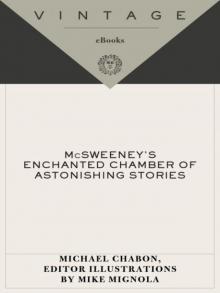 McSweeney's Enchanted Chamber of Astonishing Stories
McSweeney's Enchanted Chamber of Astonishing Stories Zombies: Shambling Through the Ages
Zombies: Shambling Through the Ages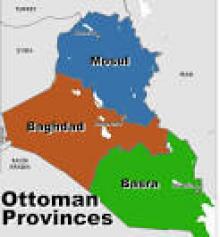 Baghdad Without a Map
Baghdad Without a Map Banshee Cries (the walker papers)
Banshee Cries (the walker papers)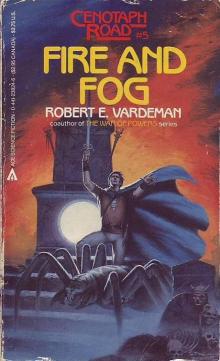 Fire and Fog cr-5
Fire and Fog cr-5 The Twelve Hot Days of Christmas
The Twelve Hot Days of Christmas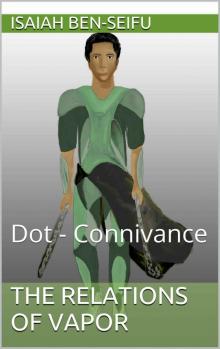 The Relations of Vapor: Dot - Connivance
The Relations of Vapor: Dot - Connivance![Harris, Daisy - Mere Temptation [Ocean Shifters 1] (Siren Publishing Classic) Read online](http://i1.bookreadfree.com/i2/04/11/harris_daisy_-_mere_temptation_ocean_shifters_1_siren_publishing_classic_preview.jpg) Harris, Daisy - Mere Temptation [Ocean Shifters 1] (Siren Publishing Classic)
Harris, Daisy - Mere Temptation [Ocean Shifters 1] (Siren Publishing Classic)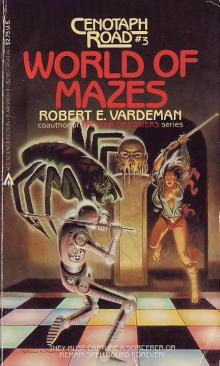 World of Mazes cr-3
World of Mazes cr-3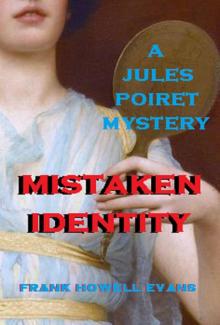 Mistaken Identity (A Jules Poiret Mystery Book 26)
Mistaken Identity (A Jules Poiret Mystery Book 26)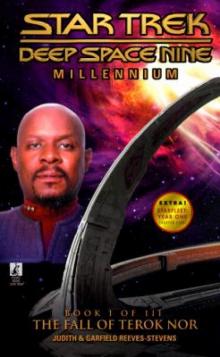 Star Trek - DS9 - Fall of Terok Nor
Star Trek - DS9 - Fall of Terok Nor Not Like I'm Jealous or Anything: The Jealousy Book (Ruby Oliver)
Not Like I'm Jealous or Anything: The Jealousy Book (Ruby Oliver) Skaterboy by J. M. Snyder
Skaterboy by J. M. Snyder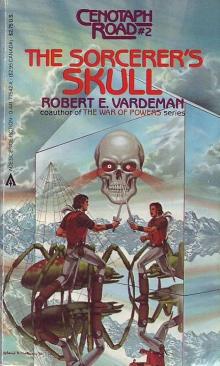 The Sorcerer_s Skull cr-2
The Sorcerer_s Skull cr-2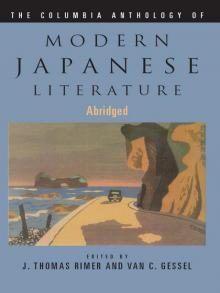 The Columbia Anthology of Modern Japanese Literature (Modern Asian Literature Series)
The Columbia Anthology of Modern Japanese Literature (Modern Asian Literature Series) New Erotica 5
New Erotica 5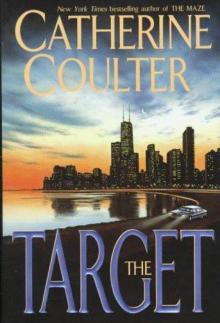 Catherine Coulter - FBI 3 The Target
Catherine Coulter - FBI 3 The Target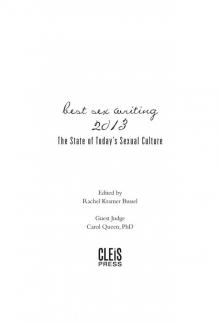 Best Sex Writing 2013: The State of Today's Sexual Culture
Best Sex Writing 2013: The State of Today's Sexual Culture Factoring Humanity
Factoring Humanity Huia Short Stories 11
Huia Short Stories 11 Call of the Wilds
Call of the Wilds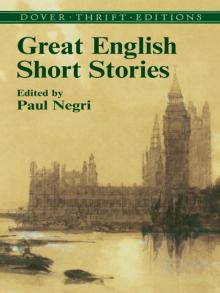 Great English Short Stories (Dover Thrift Editions)
Great English Short Stories (Dover Thrift Editions)![Ramagos, Tonya - Logan's Lessons [Sunset Cowboys 2] (Siren Publishing Classic) Read online](http://i1.bookreadfree.com/i2/04/10/ramagos_tonya_-_logans_lessons_sunset_cowboys_2_siren_publishing_classic_preview.jpg) Ramagos, Tonya - Logan's Lessons [Sunset Cowboys 2] (Siren Publishing Classic)
Ramagos, Tonya - Logan's Lessons [Sunset Cowboys 2] (Siren Publishing Classic)![Morgan, Nicole - Sweet Redemption [Sweet Awakenings 1] (Siren Publishing Allure) Read online](http://i1.bookreadfree.com/i2/04/10/morgan_nicole_-_sweet_redemption_sweet_awakenings_1_siren_publishing_allure_preview.jpg) Morgan, Nicole - Sweet Redemption [Sweet Awakenings 1] (Siren Publishing Allure)
Morgan, Nicole - Sweet Redemption [Sweet Awakenings 1] (Siren Publishing Allure)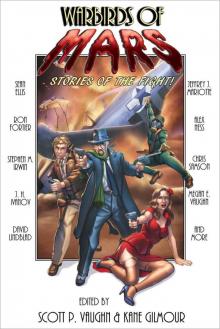 Warbirds of Mars: Stories of the Fight!
Warbirds of Mars: Stories of the Fight! Original Version of Edited Godwin Stories(lit)
Original Version of Edited Godwin Stories(lit) Where The Hell is Boulevard?
Where The Hell is Boulevard?![Chemical [se]X Read online](http://i1.bookreadfree.com/i2/04/13/chemical_sex_preview.jpg) Chemical [se]X
Chemical [se]X Allison Brennan - See No Evil
Allison Brennan - See No Evil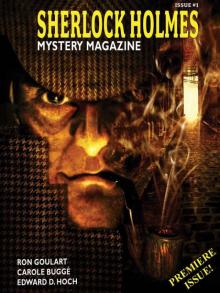 Sherlock Holmes Mystery Magazine #1
Sherlock Holmes Mystery Magazine #1